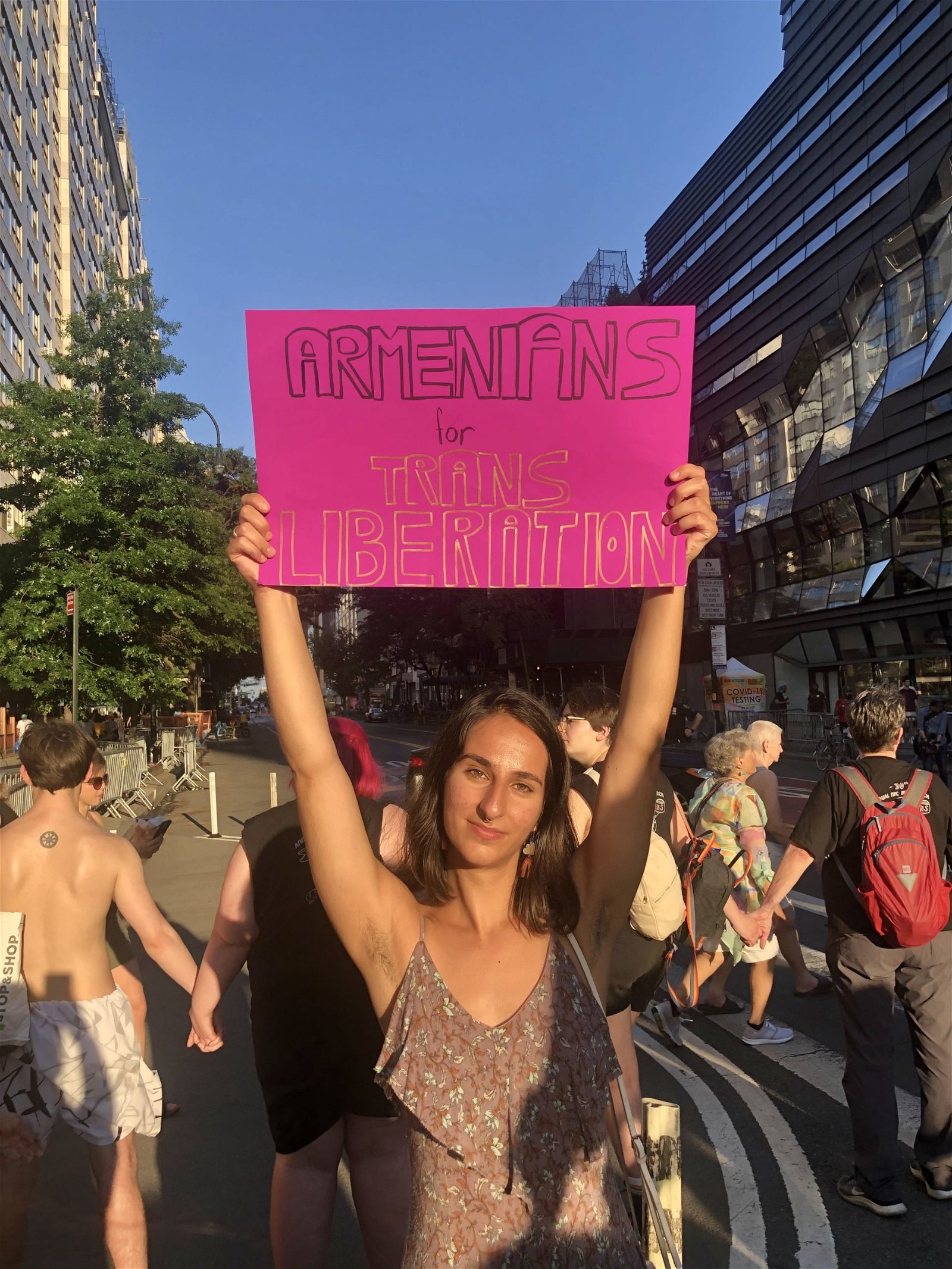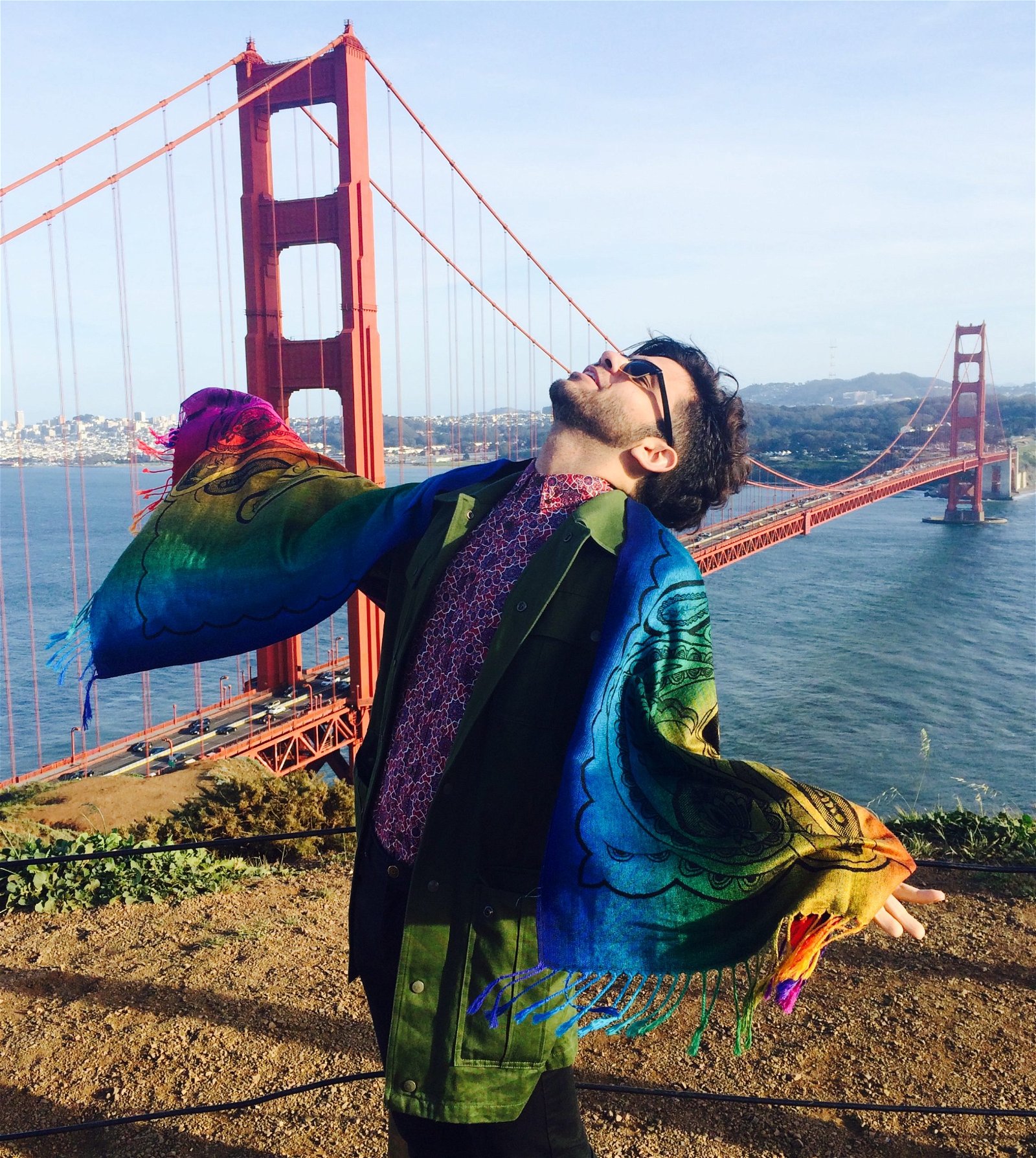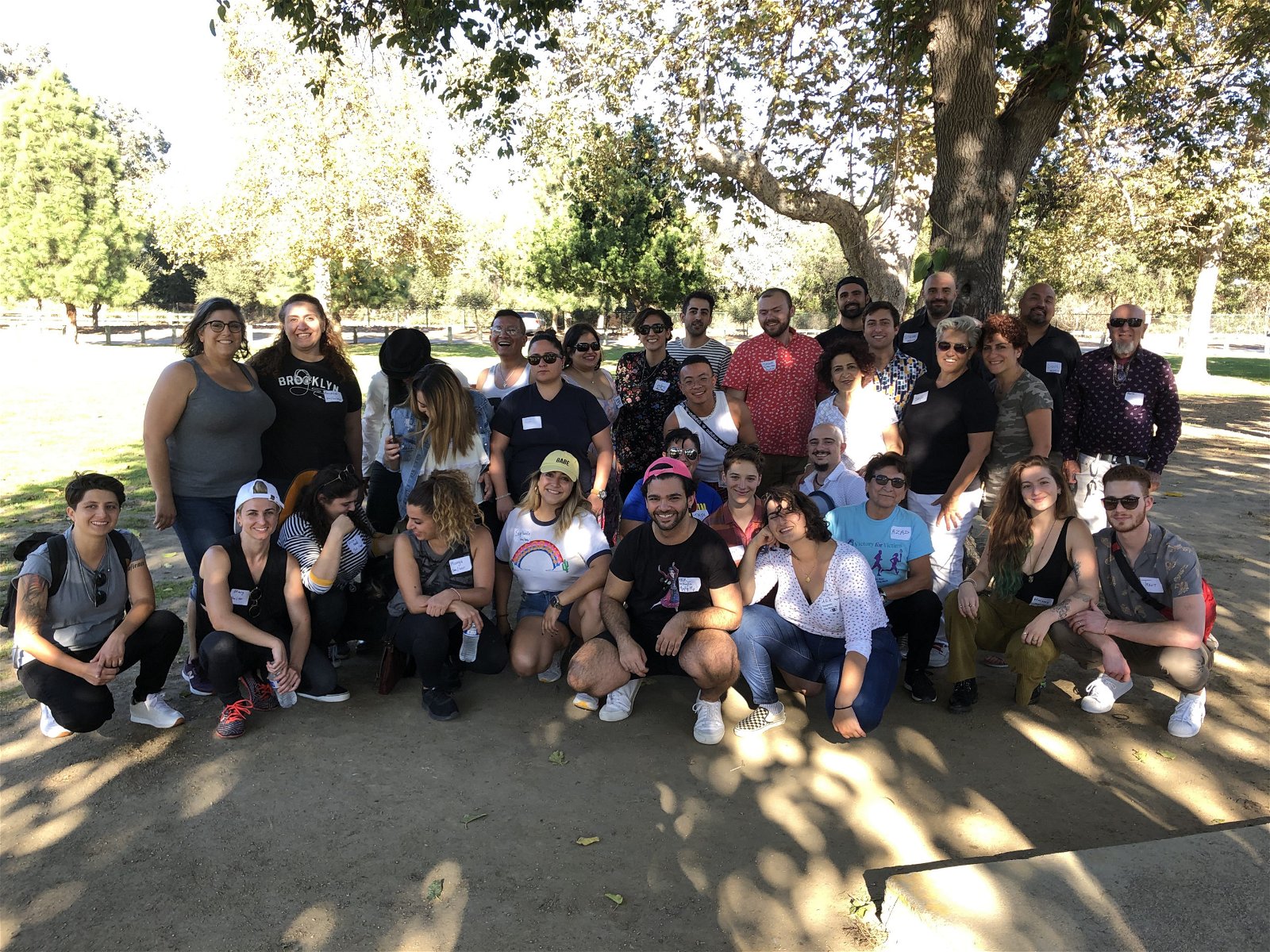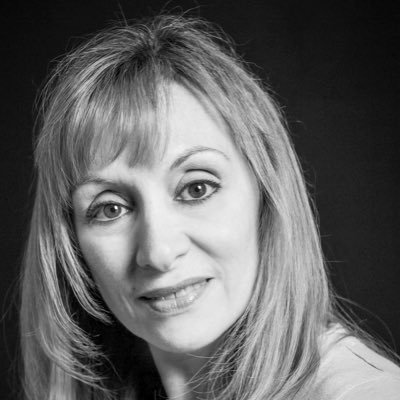This year I had the privilege of celebrating Pride for the first time since coming out as queer.
Pride has not always been a joyful season for me. I recall attending other Pride events, scheduled each year for the last weekend of June, and feeling stifled by an acute sense of shame, in stark contrast to the dancing, music and endless rainbows that color the festivities. I was not ready to rejoice unapologetically in my queerness, and Pride made my own lack of it impossible to ignore.
This year, living in New York and out of the closet, I embraced Pride with gusto, planning a full weekend of parties and marches across the city.
On Saturday, I attended Dyke March, a march that celebrates Dyke lives and protests the discrimination, harassment and violence we face in our communities. Dyke is a traditional slur that has recently been reclaimed by people oppressed at the intersection of misogyny and homophobia, a diverse community that includes lesbians, trans women, trans men and gender non-conforming people.
Thousands of Dykes of all sexualities and gender identities and expressions took to the streets, some draped in rainbow flags, some bare chested, some carrying their children, some with protest slogans painted on their bodies. The signs people carried were as diverse and intersectional as the people who marched, as they addressed lesbian pride, trans rights and reproductive justice. I felt awash in the power and joy of a sea of Dykes demanding their rights and expressing their authenticity without apology.

I was especially thrilled by the number of Armenians who approached me to compliment my sign, which read, “Armenians for Trans Liberation.” “Ճիշդ ես, you’re right!” one person shouted as they walked past. “Այո, yes!” I grinned back.
LGBTQ+ Armenians worldwide struggle for acceptance within the Armenian community. For many years, I deliberately distanced myself from my Armenian heritage, because I believed that I could not be my queer, feminist self otherwise. Since then, through reading Armenian literature and speaking with other queer Armenians, I have recognized all the similarities at the core of being queer and being Armenian: loud, stubborn pride in identities that have resisted erasure; the creativity to imagine bright futures beyond violence and subjugation; the reliance on community for care and healing.
Pride means interweaving the parts of my identity that have been fractured by shame.
For me, Pride means interweaving the parts of my identity that have been fractured by shame. It means showing up as fully queer and fully Armenian to every queer party, every Armenian community event and every protest march.
This feature spotlights several of the preeminent activists fighting for the rights of LGBTQ+ Armenians in both Armenia and the diaspora. It places them in conversation with each other around the central question, “What does Pride mean to you?”
Erik Adamian reflects on his lifelong journey to taking pride in his intersectional identities as a gay Armenian-Iranian immigrant.
Kristin Anahit Cass shares the community events that have built a global network of queer Armenians part of a chosen family called Entanik.
Lilit Martirosyan testifies to the challenges she has overcome but also the joys she has uncovered as an activist for trans rights in Armenia.
Pride is a season of resistance and celebration. After a weekend of parties, protests and parades, this feature is an opportunity to sit and reflect on the responsibilities we owe to the LGBTQ+ members of our community and all the ways in which they have been leaders toward a better Armenian future. Happy Pride.
Erik Adamian, president of the Board of Directors of the GALAS LGBTQ+ Armenian Society
When I first came out to myself and a few close friends about a decade ago, I went to some Pride celebrations, kissed a few boys and basked in the glory of my gay rainbow heart. I even took a photo wearing a vaguely rainbow colored scarf in San Francisco for my Facebook profile (much to my mother’s dismay). Even though I was mightily fighting to be okay with my existence as a gay Armenian-Iranian immigrant, I didn’t find the concept of Pride, as seen on TV and in West Hollywood, even remotely relatable. It’s been a beautiful and painful couple of years, but I get it now—or at least, I’m trying.

In June 1969, the Stonewall Rebellion in NYC catalyzed the LGBTQ+ Civil Rights Movement and put it on a national map. A year later, LGBTQ+ activists decided to celebrate this victory, and Pride was born. Since its inception, Pride has continuously served as a reminder that LGBTQ+ folks matter. Our rights, our identities and our existence matter, so let’s celebrate us. For me, Pride signifies exactly that: my rights matter, my identities matter, my existence matters and I will celebrate that. However, as a gay Armenian-Iranian immigrant, celebrating myself gets a bit complicated.
Growing up in a religious and conservative culture, every effort was made to ensure that I am a good Armenian boy: focus on school, uphold Armenian and Christian values, respect your elders and don’t stray away from how you’re destined to live. And I obliged, until I couldn’t—not because I didn’t want to, but because I started identifying as gay. No one had to explicitly tell me, but I already knew that the same culture that I had upheld so dearly would reject my entire personhood because of my queerness. There was barely any room for survival and sanity, let alone pride. How could I be proud of myself when my intersectional existence was not always welcomed?
To some, intersectionality of identities can be a challenging concept to grasp. To those of us who live it, it can be infinitely more challenging to actualize. For reasons beyond the scope of this article, in the Armenian community, we are generally taught to prioritize identities that align with the collectivistic values of our community and discard ones that can pose as threats to said collectivistic values. Whether we like it or not, we all contain a multitude of identities that make up our whole person. To name some of my identities, as an Armenian-Iranian, I am the descendant of millennia of vibrant and imperishable ancestry; as an immigrant, I am the pillar of a bright future for my family and me; and as a queer person, I am the most authentic expression of my body and desires. Yet in a culture in which differences lead to otherization and individualism is seen as outrageous, if not a threat, how do I affirm and honor all of me and take Pride in it?
So I found community through the GALAS LGBTQ+ Armenian Society, and we’ve been holding each other up. The humans of GALAS affirm and accept each other, amidst hatred and division. We recognize that our journeys are also bigger than one person. When one of us is able to show up in the world authentic in our multiple identities, that makes it possible for others like us to do the same. The organization continues to provide invaluable tools for queer Armenians to invest in their own paths toward dignity and self-actualization. I’ve been putting those tools to good use for myself.
Pride means the perpetual embodiment of all of my identities, all at once, all the time.
Over the years, I’ve learned to carve the space for my entire personhood that I was told I can’t embody. I’ve learned to share myself only with those who are just as excited about me being a queer Armenian-Iranian immigrant as I am. I’ve practiced patience and empathy towards myself, and I’m still learning to love myself for everything that I have always been. I suppose, somewhere along the way, I’ve learned how to be proud. Pride is the long, ongoing, and most rewarding commitment that I continue to practice and nourish. To me, Pride means the perpetual embodiment of all of my identities, all at once, all the time. Although I know that the full realization of the sweet intersection of my identities is a life-long journey, I am now able to recognize Pride when I see it, even if it’s for a fleeting moment.

Pride is speaking with families of queer Armenians about creating LGBTQ+ educational resources for the Armenian community. Pride is showing up to an Iranian or Armenian event with my queer friends. Pride is participating in any event or program organized by GALAS. Pride is working endless hours to organize said events and programs. Pride is standing up for the rights and the equitable treatment of LGBTQ+ Armenians. Pride is recognition for the monumental work LGBTQ+ Armenian activists do. Pride is celebrating the accomplishments of my queer Armenian friends. Pride is extending aid to a struggling queer Armenian person. On a more personal note, Pride is (reluctantly) showing my parents photos and videos of my queer friends and I hanging out. Pride is a heartfelt and vulnerable conversation with my queer loved ones. Pride is getting teary-eyed when writing this piece. Most importantly, Pride is accepting and cherishing in my heart and soul, that I have a place in the world as the gay, the Armenian, the Iranian, the immigrant and everything else, all together.
I often have to remind myself that it is okay if mainstream portrayals of Pride seem hollow and that Pride is not just an assigned day or month. Pride was born from conflict and rebellion. It is the LGBTQ+ community’s unapologetic and brave stance on equity, acceptance and celebration of ourselves and our community. And for me, it’s been a lifetime of conflict, pain, radical self love, vulnerable human connection and community. As a proud member of the LGBTQ+ Armenian community, I am eternally grateful and humbled for every single queer Armenian person I have met. We continue to make significant strides towards visibility and self-acceptance, although challenges and setbacks remain aplenty. Through community, empathy, kindness and aid, we recognize and slowly heal from the trauma and pain of cultural rejection, and we speak up against homophobia and transphobia when we can. Our rights matter, our identities matter, and our existence is just as much magic as it is real—we got this!
Kristin Anahit Cass, Entanik board member
Hospitality is a beautiful part of our culture, but Armenian communities don’t often feel welcoming to queer Armenians. As Armenians, we are a small global nation with most of us living in the diaspora. We need the strength of all Armenians to preserve and foster our culture.

Some years ago, we began welcoming queer Armenians new to our area for dinners and holidays. These gatherings created a new sense of home and belonging where it didn’t exist before. They created a drive to develop a better future of love and inclusivity for all Armenians in a supportive community where all are accepted whether queer, straight, mixed, allied, or other.
Fast forward to the war in 2020, when many queer Armenians experienced both the despair of the war and a sense of being unwelcome in the community. There were queer Hayastansis fighting for our homeland and queer diasporans working to help provide aid on the ground. For some in the diaspora, protesting and lobbying didn’t feel like enough. We wanted a way to draw Armenians and others to our cause, raising awareness and supporting Armenians in a new and creative way.
Entanik’s first event, Cher the Love for Artsakh, was created to raise funds for relief efforts and to share our joy in our culture, radical in the face of existential violence. In over an hour of virtual performances, artists paid homage to one of the most famous Armenian music artists and shared their pride and creativity. This event brought together drag artists from all over the world, Armenians and allies, to raise both money and awareness. The response was overwhelming, and so Entanik was born to create a welcoming space for queer Armenians and other SWANA folks and allies.
Since then, Entanik has grown into a global family that brings together Armenians and allies both online and in person. We have been able to foster much needed connection within queer and allied communities worldwide. We mark Genocide Remembrance Day with a healing space open to all, addressing the dual trauma of our ancestors’ suffering and our exclusion from Armenian culture and community. We foster connections by sharing the work of queer artists and creators. One Armenian American drag artist told us that they were able to connect to other performers across the globe through our platform in order to create artistic collaborations.
We need the strength of all Armenians to preserve and foster our culture.
Entanik has also reached out to queer Armenians in need, like a Parskahay man facing persecution in Iran. By connecting activists in different spaces, we’ve been able to make positive change and help community members find safe and welcoming spaces. We’ve fostered alliances with other queer SWANA organizations, creating supportive relationships across the diaspora for Armenian issues.
While in Armenia, we connected with queer organizations on the ground and met the brave people working to protect the human rights of queer Armenians. We’ve heard their stories of discrimination and abuse. We gather together as a group to make our favorite foods like dolma and to celebrate Armenian holidays with our chosen family. We host events, like the Endless Pride Picnics, where you’ll see folks from Armenian and other SWANA diasporas gathered to share our foods, music, dance and a culture of generous and welcoming hospitality.
Many of our volunteers have been Armenian allies outside the queer community. For me, as a volunteer working for Entanik, the most rewarding moment came when someone new to the group came to a picnic and afterwards told us, “This is the first time I’ve been in a space where I felt like I could be myself and be welcomed.” That’s all I need to motivate me to work for that better future where all Armenians are loved and accepted, making us stronger together. As we come together in community, we take pride in being Armenian, and being fully ourselves.
Lilit Martirosyan, president of Right Side NGO
I am Lilit Martirosyan, a trans woman, trans rights activist and human rights defender from Armenia. Since the age of 16, I have been striving for equality and acceptance, and Pride has always had a great importance for me. It is a form of belonging and being accepted by my family members, relatives, friends, strangers for who I am. Through all these years, I have been facing many challenges, but also learning that I should be proud of who I am and show the world and society my true features without hiding.

I am only 32, but I have managed to celebrate Pride with my community both in Armenia and in different European countries. Armenian society has tried to kill me and break my spirit, drive my community and me to live by hiding in the shadows of the night, but they have not succeeded. I continue living and raising my voice for my community. I continue loving and enjoying life. I have tapped into a legacy of resistance.
Before changing laws and policies, we need to change our understanding about love.
I want to say that the pursuit of freedom, justice and happiness and the desire for a dignified life can become a reality for everyone if we remove the hindering factors from our way of improved relations. Before changing laws and policies, we need to change our understanding about love. We need to change our behavior by celebrating diversity.
Pride Month is about being united, standing together, being there for each other, giving a helping hand to the needy and lifting each other up at any opportunity.



As an autistic neopagan Armenian I kind of get what it’s like to be on the fringes of the Armenian identity, although I haven’t really had a lot of outright hostility aimed at me. But I feel a sort of kinship with LGBT Armenians.
All of us “darorinak”s need allies
We only live once. Enjoy your life not worrying about others.